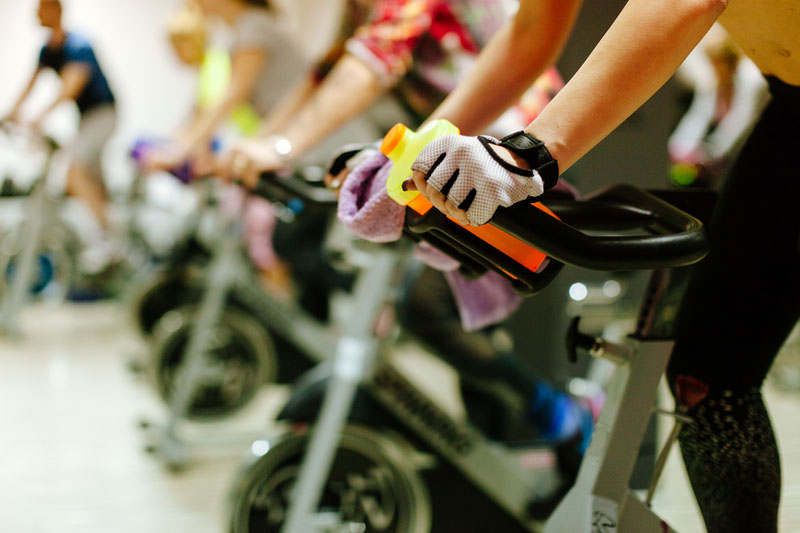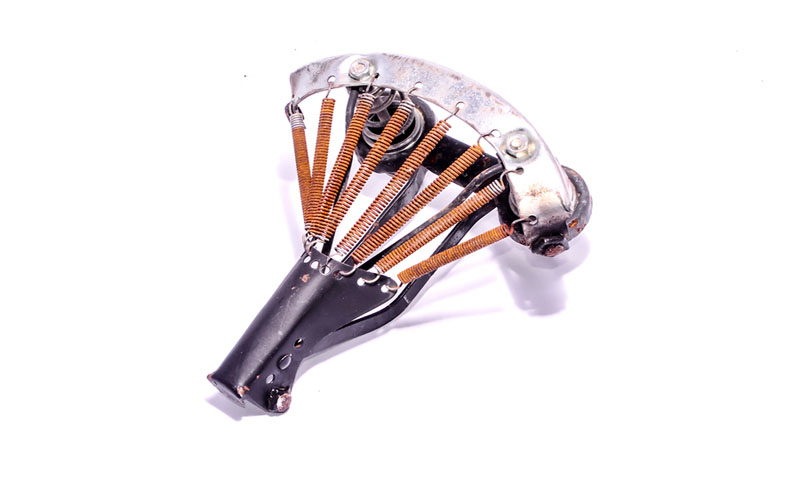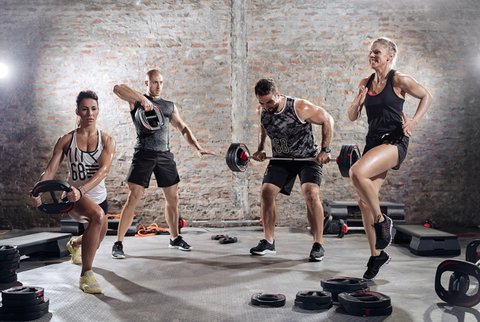What is Interval Training?
It's the question many people are asking. What is interval training? The word is out, and you're going to love the benefits it has to offer!

What is Interval Training?
How can you increase your aerobic endurance and cardiovascular fitness? The same way you build muscle.
Muscles grow when the work loads challenge them -- if you don't increase the weight, you don't get stronger. Using the same theory, if you don't increase running, swimming, cycling, or cross-training pace, you won't get faster and better.
Interval training is alternating between high intensity and low intensity exercise during the same workout.
The beauty of interval training in that it involves both aerobic and anaerobic systems.
Aerobic training involves the heart and lungs.
Anaerobic training involves strength.
Aerobic activity is at 70%-80% of your maximum heart rate (MHR). It is great for general cardiovascular fitness and fat burning.
The anaerobic zone during interval workouts is 80%-90% of MHR. Anaerobic enhances both lung capacity and lactate tolerance (the burn you feel in your muscles during strenuous exercise).
Benefits of Interval Training in a Nutshell -- The Good Part
Are you avoiding working out because you don’t have the time? Interval training enables you to cut your workout time by up to 75%. Are you interested now?
A fifteen-minute interval workout is equivalent to running for one hour. According to a study by the American College of Sports Medicine, two weeks of high-intensity interval training improves cardiovascular fitness as much as six to eight weeks of endurance training.
Do you want to obliterate body fat? Try interval training.

Interval Training vs Steady-State Endurance
Doing the steady-state endurance cardio/aerobic activity for 30 to 60 minutes as an approach to fitness is outdated. Steady-state workouts can lead to chronic inflammation, and stimulates high levels of cortisol, which can cause an increase in body fat and loss of muscle tissue.
Furthermore, high-intensity interval training (HIIT) requires 40% less training time than moderate-intensity continuous training.
Does this mean that a long bike ride or long run is bad? No. It’s just best to switch up the intensity every now and then (interval training).
Why Interval Training as You Age?
What is interval training? It is a workout that will keep you at a higher state of fitness as you age.
A study of 60 triathletes, ranging in age between 20 and into their 70s suggests that trained athletes get less efficient as they age. (It is important to note here that the triathletes in their 70s were more fit than sedentary 35-five-year-olds.) The answer to avoiding the loss of efficiency was not in the heart and lungs, but in the muscles.
This goes back to our original question. What is interval training? It is both aerobic and anaerobic. The importance of combining both cardio and strength for greater fitness is supported by the fact that the older athletes increased both leg strength and cycling efficiency by approximately 17%.
Interval Training Tips -- Getting Started With Interval Training
There is no magic formula as to how long the high or low intensity phases should be. There are as many suggestions as there are articles and books on the subject.
If you are a beginner, the duration of each segment can be as little as 10, 20, or 30 seconds at high intensity (80%-90% MHR) followed by 10, 20, or 30 seconds of lower intensity.
As your endurance improves, do 1 minute bursts followed by 2 minutes of recovery; then, 3 minutes with a 3-minute recovery.
Don’t let the recovery phase be too long. You want to keep the pressure on your body to adapt. The same principle of adaptation applies here as it does in strength training. In weight training we call it a 'set,' rather than 'interval.'
During interval training, go fast for as long as you feel like it, go slow long enough to recover (but not completely), then repeat it again. Repeat these cycles three to five times. It doesn't have to be exacting.
Listen to your body. Do what feels right for you. If you don't have a heart rate monitor or sports watch, follow your perceived exertion. Just remember that the high intensity phase is exactly what it says -- intense.
What is interval training? It is time-efficient exercise in which the degree of effort you put into the exertion phase determines the degree of results you will get.

How to Incorporate Interval Training into Your Current Workout
What is interval training? It is a means of exercise in which you don't have to completely stop doing the aerobic activities you already love.
There are many ways to include intervals into your existing workouts by increasing the incline, resistance, or speed. If you bike, mix it up accordingly. If you like walking, include hills or stairs, and make sure you are working hard on the way up. If you run out of hills or stairs, go back down slowly enough to rest, turn around, and do it again.
If your exertion heart rate isn't between 80%-90% and your muscles aren't begging for mercy, you may need to increase your intensity.
Start with a total workout time of 5 minutes and work up to 15 minutes. There is no need to exceed 15 minutes. Two or three times per week is sufficient to get wonderful results.
The Need for Sufficient Recovery Time
My personal recommendation, based upon the principle of adaptation, is that you not repeat interval training on consecutive days. Just as your muscles need time to recover between weight training workouts, they need to recover from interval aerobic/strength training also.
This is particularly true as you age. Aging bodies need more recovery time.
Now, if someone asks you the question, "What is interval training?" you will be in-the-know. Interval training is a pattern: brief exercise at maximum intensity, rest, then repeat.
Your Comments
Very cool! Been wanting to start this kind of workout. Great info and inspiration for both me and my husband. Thanks!!! -- Katrina McKie
More Topics That May Interest You

Writer/attorney, Bonnie Gabaldon, is the developer of the health & fitness website, BodiesOfEvidence.com.
Bonnie graduated summa cum laude from Oregon State University with honors. She is a member of Beta Beta Beta Biological Honor Society and Phi Kappa Phi Honor Society.
She researched and authored a significant undergraduate independent study paper, The Effect of Female Hormones on Elite Female Athletes During the First Trimester of Pregnancy.
Bonnie attended the University of New Mexico School of Law and Georgetown Law Center, and has been a licensed attorney since 2003.
Some of the advertisers on my website are affiliate partners, which means that I may receive a small commission from any sale, at no extra cost to you.
For example, the Amazon affiliate advertising program is designed to provide a means for sites to earn fees by advertising and linking to amazon.com.
Your tips and purchases help to support this free-information website.
Thank you.
The content of this website is for informational purposes only and not intended to be taken as a replacement for professional medical advice, care, diagnosis or treatment by a doctor, dietitian, physical therapist, nutritionist or fitness instructor.
DO NOT BEGIN ANY EXERCISE PROGRAM WITHOUT CHECKING WITH YOUR DOCTOR FOR UNDERLYING CONDITIONS THAT MAY PREVENT YOU FROM DOING SO.







